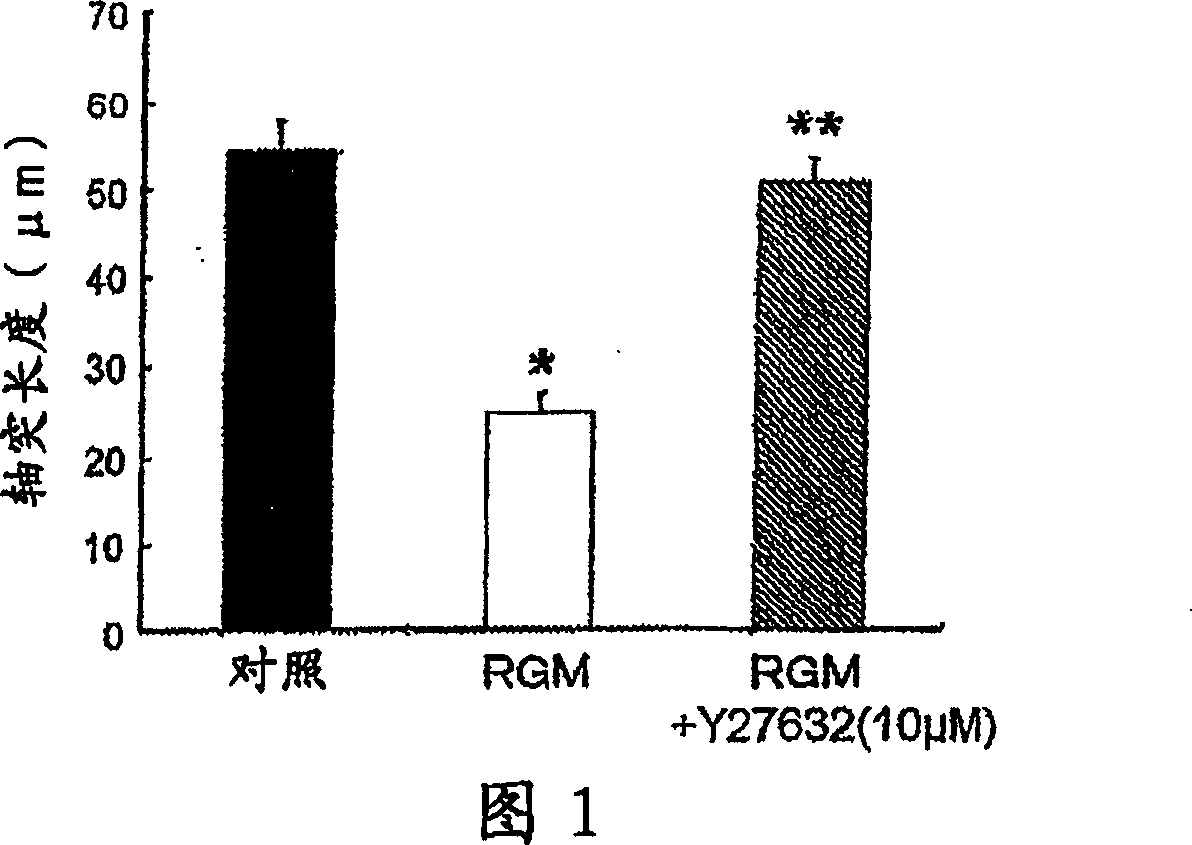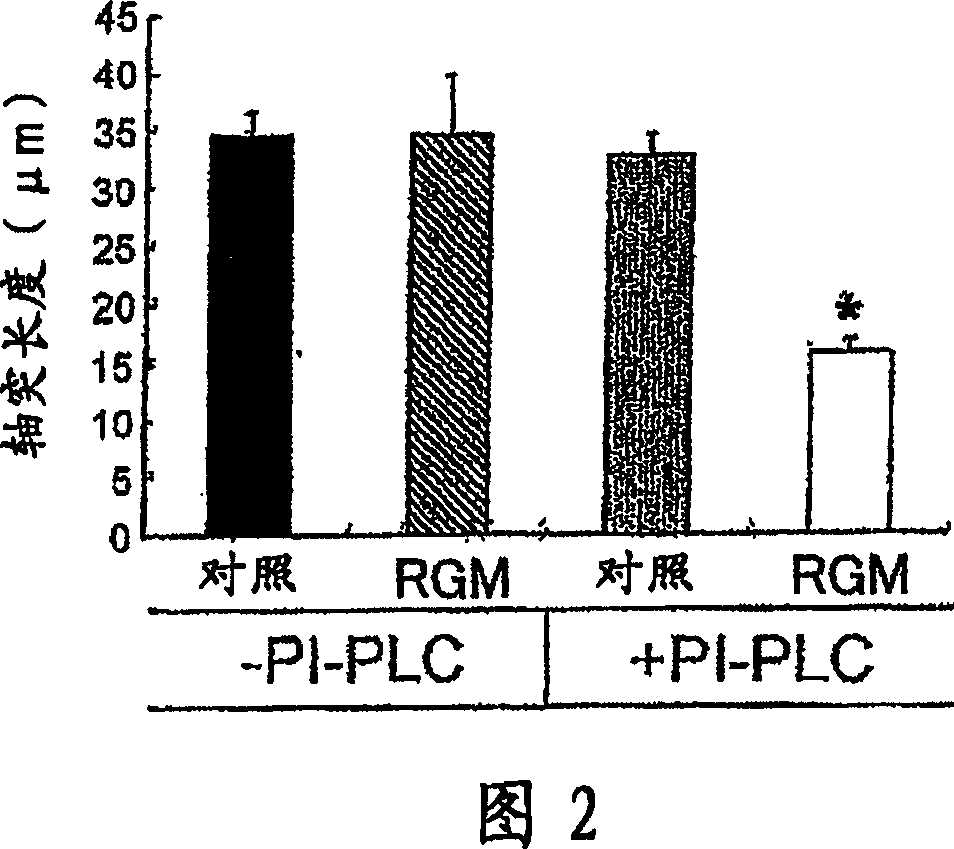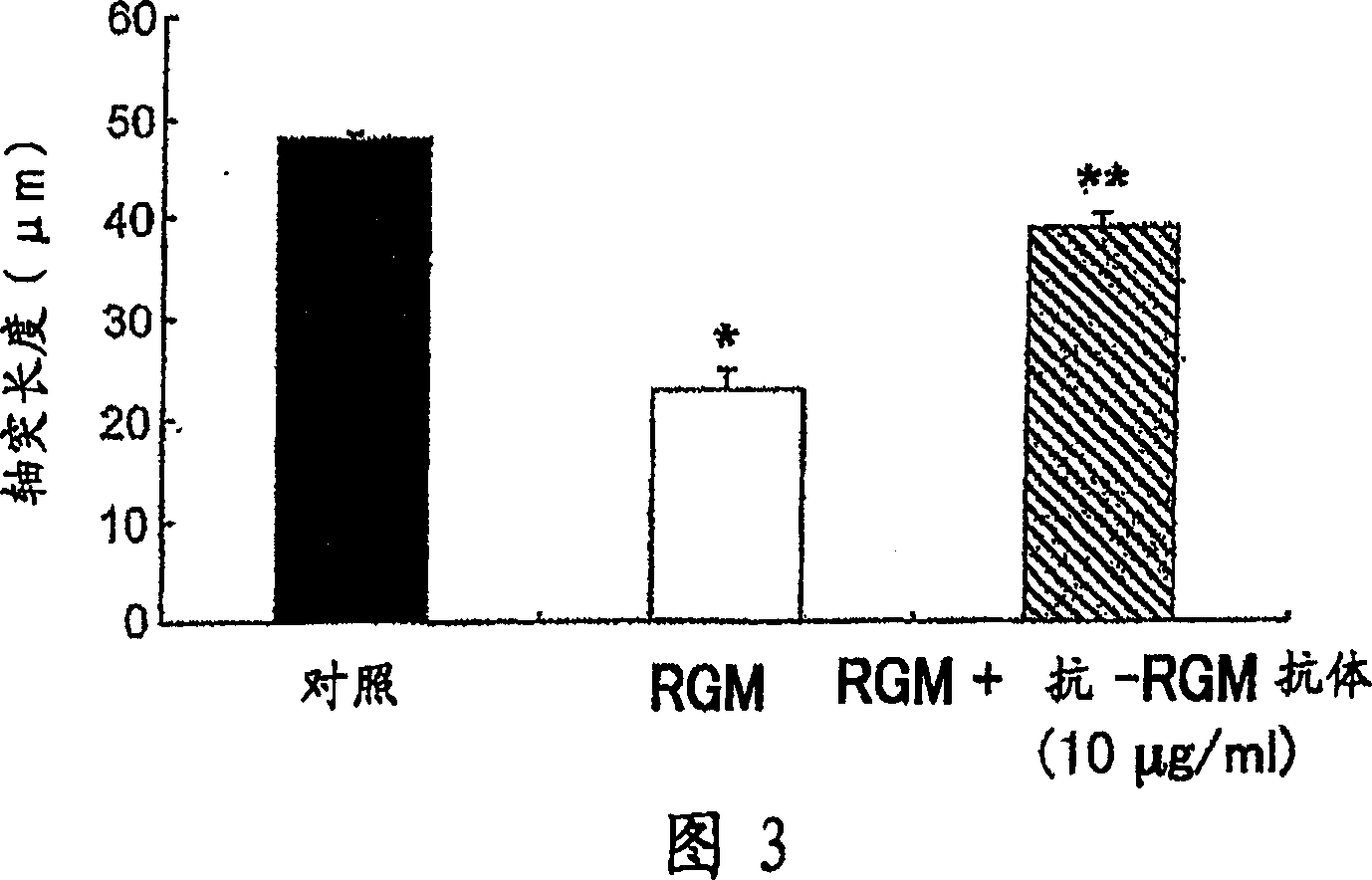Axon regeneration promoter
A technology for axon regeneration and promoters, which is applied in the field of axon regeneration promoters, and can solve problems such as inability to promote spinal cord regeneration and inability to regenerate central nervous system axons
- Summary
- Abstract
- Description
- Claims
- Application Information
AI Technical Summary
Problems solved by technology
Method used
Image
Examples
preparation example Construction
[0055] Preparation of antibody-producing cells
[0056] Cells producing antibodies that bind to RGM-like proteins can be obtained by methods well known in the art. Animals are immunized with RGM-like proteins as allergens, the resulting immune cells are collected, fused with myeloid tumor cells, and hybridomas producing antibodies are cloned. In more detail, first, an RGM-like protein is prepared as an antigen. The commercially available brain cDNA library contains the cDNA of the RGM-like protein, so the amplified product of the gene can be easily obtained by PCR using the commercially available brain cDNA library as a template, and the gene can be inserted into an appropriate vector to achieve recombination. Generates RGM-like proteins. Then, the above-prepared RGM-like protein is used as an antigen and administered subcutaneously, intravenously or intraperitoneally to animals. Mammals such as mice, rats, hamsters, rabbits, and goats can be used as immunized animals. Pre...
Embodiment 1
[0087] Cloning of RGM-like proteins
[0088] Using the amino acid sequence of chicken embryo RGM (Non-Patent Document 24) as a query sequence, a BLAST search of the GenBank database was performed. The result was identified as the rat cDNA with the accession number XM_218791 (Rattus norvegicus). The deduced amino acid sequence has 79% homology with chicken embryo RGM-like protein, so XM_218791 was named rat RGM-like protein. The full-length rat RGM-like protein cDNA was isolated from a mature rat brain cDNA library by PCR. The base sequence of the forward primer used is agtggtaacaggccgagctggatgg (SEQ ID NO: 5), the base sequence of the reverse primer is ccacaaccttgtcgcgtgcactaat (SEQ ID NO: 6), and the denaturation step at 95°C for 30 seconds and annealing at 55°C for 30 seconds were repeated 25 times. step, and an elongation step of 3 minutes and 30 seconds at 72°C. The encoded protein consists of 431 amino acid residues. Based on Non-Patent Document 24, since native rat R...
Embodiment 2
[0119] 1. Method
[0120] (1) Surgery
[0121] Anesthetized (sodium pentobarbital, 40 mg / kg) male Wistar rats (200-250 g) were subjected to T9 / 10 laminectomy at the vertebral level to expose the spinal cord. A No. 11 blade was used to cut to a depth of 1.8 mm in the dorsal portion of the spinal cord. By histological examination, in all animals, the injury described above severed all dorsal corticospinal tract (CST) fibers in the posterior column, as well as the lateral corticospinal tract, extending beyond the central canal. Immediately after the half of the spinal cord was cut, it was assembled to be full of control antibody (8 mice, 22.3 μg / kg day, 2 weeks) or the anti-RGM-like protein antibody prepared in Example 1 (8 mice, 22.3 μg / kg day, 2 weeks ) osmotic pressure micropump (200 μL solution, 0.5 μL / hour, delivery for 14 days) (manufactured by Durect, Cupertino, California, USA). The micropump was placed under the skin on the back of the animal, and the silicone tube co...
PUM
 Login to View More
Login to View More Abstract
Description
Claims
Application Information
 Login to View More
Login to View More - R&D
- Intellectual Property
- Life Sciences
- Materials
- Tech Scout
- Unparalleled Data Quality
- Higher Quality Content
- 60% Fewer Hallucinations
Browse by: Latest US Patents, China's latest patents, Technical Efficacy Thesaurus, Application Domain, Technology Topic, Popular Technical Reports.
© 2025 PatSnap. All rights reserved.Legal|Privacy policy|Modern Slavery Act Transparency Statement|Sitemap|About US| Contact US: help@patsnap.com



